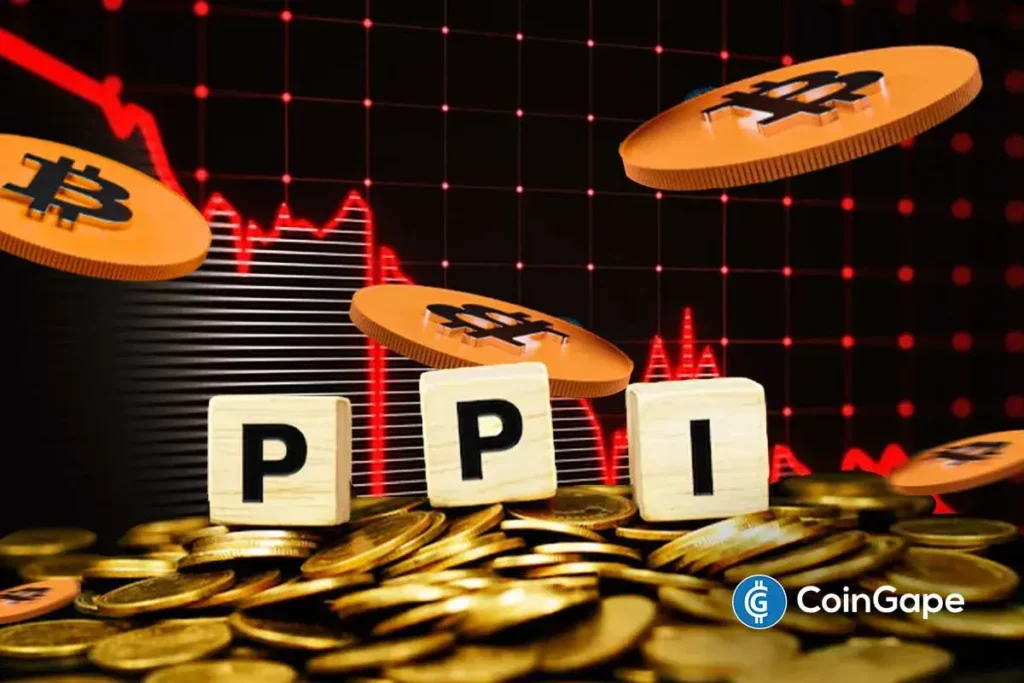Title: Understanding the Impact of September PPI Inflation on Bitcoin and Future Rate Cuts
In September, the U.S. Producer Price Index (PPI) inflation data delivered unexpected results that have sent ripples through financial markets, particularly affecting cryptocurrencies like Bitcoin. The inflation rate rose to 2.7% year-over-year, exceeding analysts’ expectations of 2.6%. Meanwhile, Core PPI inflation came in at 2.6%, slightly lower than the anticipated 2.7%. These mixed signals have created uncertainty about the Federal Reserve’s upcoming monetary policy decisions, particularly regarding rate cuts at the December Federal Open Market Committee (FOMC) meeting.
Following the release of the PPI report, Bitcoin experienced a notable decline, dropping from approximately $87,800 to below $87,000. As of the latest figures, Bitcoin is hovering around the $87,000 mark, reflecting bearish sentiment among investors. This swift drop in Bitcoin’s price underlines the cryptocurrency’s sensitivity to macroeconomic indicators and their implications for interest rates. Market participants are keenly analyzing how these inflationary pressures may influence monetary policy, particularly in an environment where rate cuts have been a topic of discussion.
The importance of PPI data cannot be overstated as it serves as a barometer for inflation and has implications for the Federal Reserve’s actions. Although the prevailing expectation had leaned towards a rate cut in December, the stronger-than-anticipated inflation figures are prompting rethink among some analysts. Just over 80% of experts had projected a potential 25-basis-point cut, but skepticism is growing among certain Fed officials, particularly in light of rising inflation expectations. Such contrasting perspectives make the upcoming FOMC meeting a crucial event for investors and market observers.
Key figures within the Federal Reserve are weighing these inflationary pressures against the backdrop of the labor market. Fed Governor Chris Waller highlighted that while inflation isn’t currently deemed a significant issue, there remains little evidence to suggest a recovery in the labor market. His cautious outlook on economic conditions has implications for the Fed’s monetary direction. Waller’s stance indicates that while the PPI data shows inflation ticking up, it’s not inherently alarming, paving the way for potential rate cuts.
Further commentary from market analysts reinforces the notion that the current PPI figures are less concerning than the state of the labor market. The Kobeissi Letter indicated that inflation pressures shouldn’t overshadow broader economic signals pointing towards labor weakness. Their analysis leads them to predict that the Fed may still proceed with a third rate cut in December, despite the inflation data. This contradiction in economic indicators presents a challenging scenario for the Fed as it navigates maintaining economic stability while addressing inflationary concerns.
In conclusion, the latest PPI inflation data for September has introduced a complexity to the already intricate relationship between Federal Reserve policies, inflation, and cryptocurrency valuations like Bitcoin. The mixed economic signals necessitate vigilant monitoring as the Fed prepares for its December meeting. Investors across markets, particularly in cryptocurrencies, must remain attentive to these economic indicators and the Fed’s evolving responses, as they can significantly influence asset valuations and market sentiment. Understanding these dynamics is crucial for making informed financial decisions in an unpredictable economic landscape.


